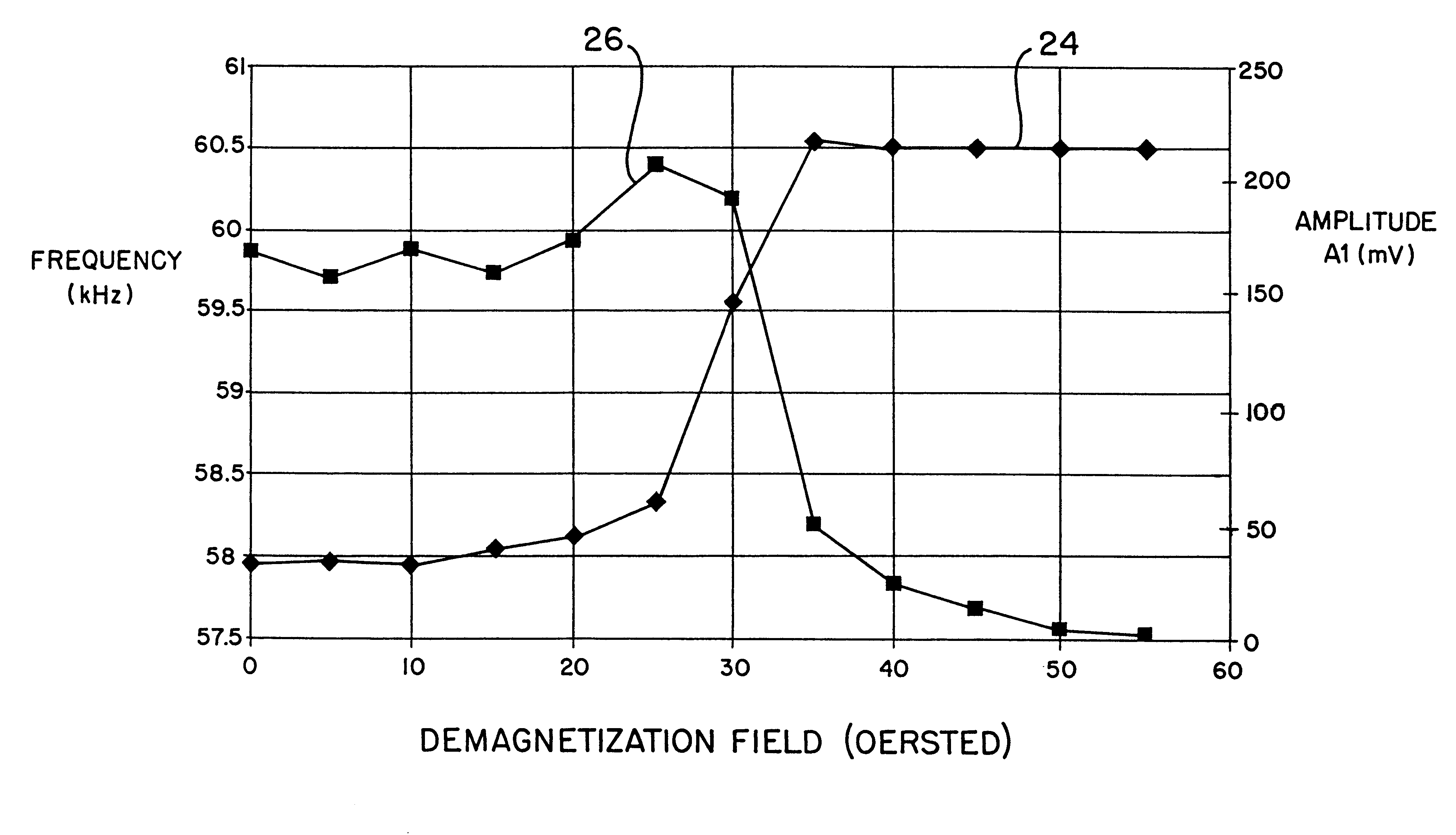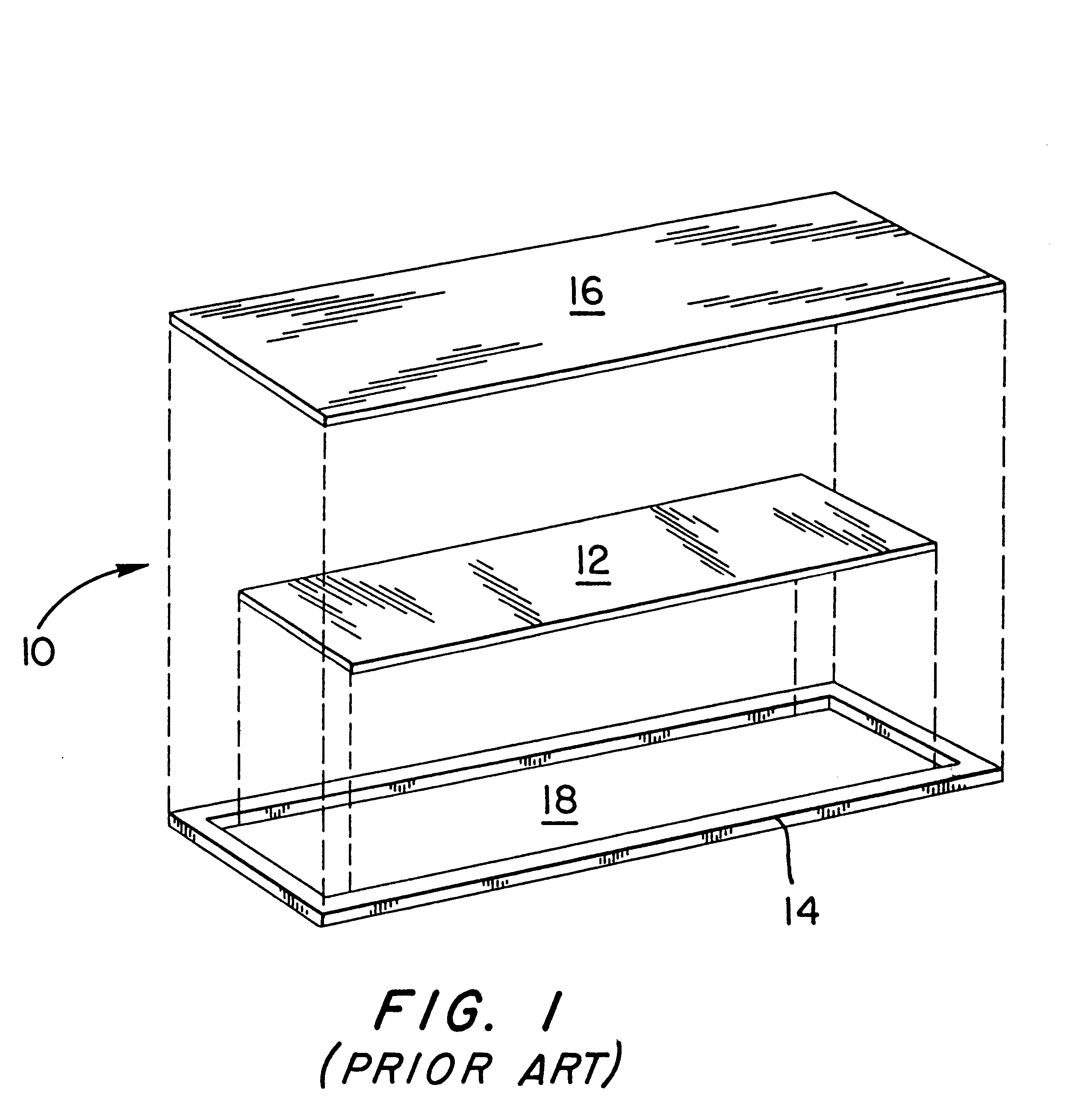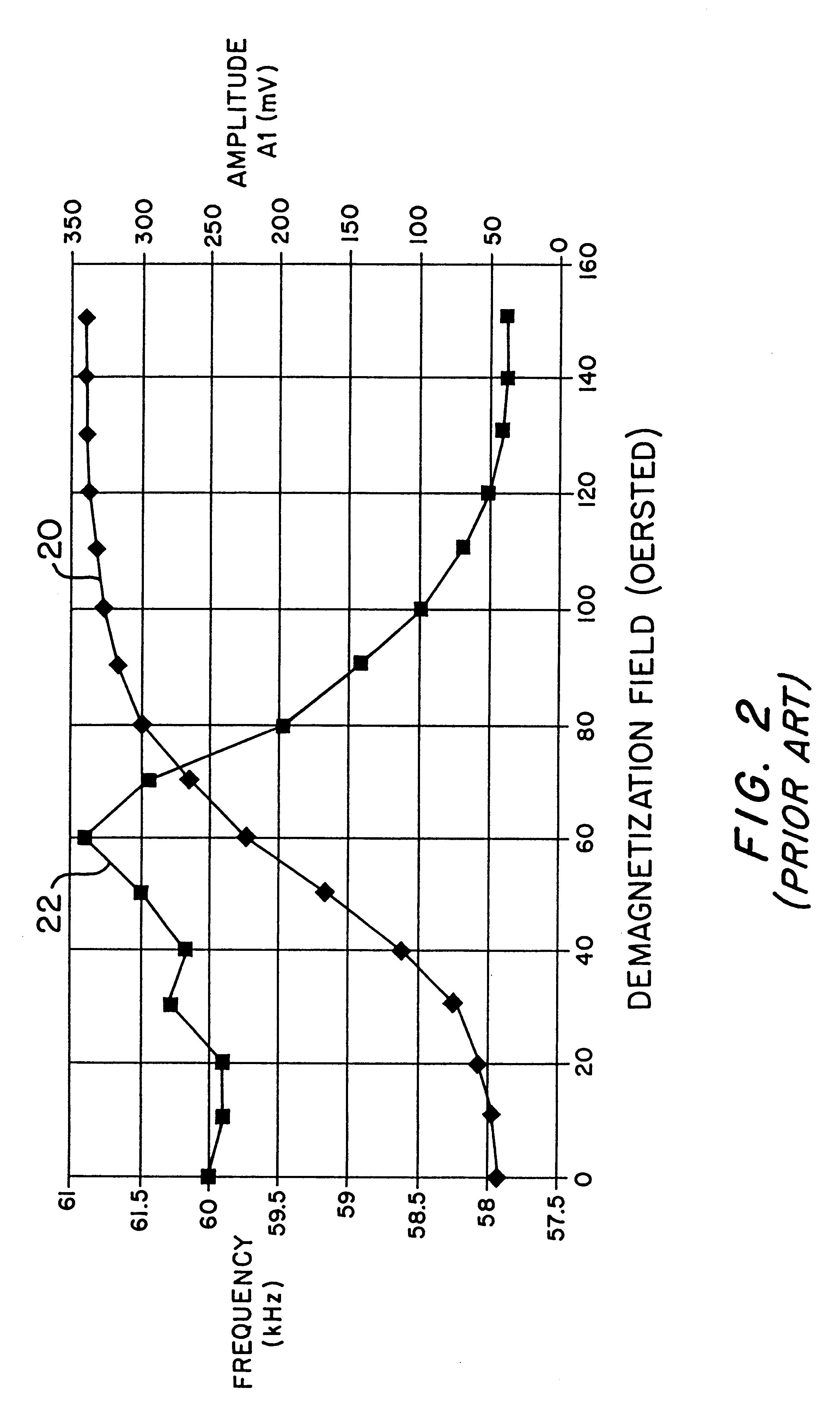Magnetomechanical electronic article surveillance marker with bias element having abrupt deactivation/magnetization characteristic
- Summary
- Abstract
- Description
- Claims
- Application Information
AI Technical Summary
Benefits of technology
Problems solved by technology
Method used
Image
Examples
Embodiment Construction
In accordance with the invention, a marker like that described above in connection with FIG. 1 is formed, using as the biasing element 16 a relatively low coercivity material such as the alloy designated as "MagnaDur 20-4" (which has a coercivity of about 20 Oe and is commercially available from Carpenter Technology Corporation, Reading, Pa), instead of the higher-coercivity conventional materials such as SemiVac 90. MagnaDur 20-4 essentially has the composition Fe.sub.77.54 Ni.sub.19.28 Cr.sub.0.19 Mn.sub.0.31 Mo.sub.2.38 Si.sub.0.30 (atomic percent). In a preferred embodiment of the invention, the active element 12 is formed from a ribbon of amorphous metal alloy designated, for example, as Metglas 2628CoA, commercially available from AlliedSignal, Inc., AlliedSignal Advanced Materials, Parsippany, N.J. Other materials exhibiting similar properties can be used for active element 12. The 2628CoA alloy has a composition of Fe.sub.32 Co.sub.18 Ni.sub.32 B.sub.13 Si.sub.5. The 2628CoA...
PUM
 Login to View More
Login to View More Abstract
Description
Claims
Application Information
 Login to View More
Login to View More - R&D
- Intellectual Property
- Life Sciences
- Materials
- Tech Scout
- Unparalleled Data Quality
- Higher Quality Content
- 60% Fewer Hallucinations
Browse by: Latest US Patents, China's latest patents, Technical Efficacy Thesaurus, Application Domain, Technology Topic, Popular Technical Reports.
© 2025 PatSnap. All rights reserved.Legal|Privacy policy|Modern Slavery Act Transparency Statement|Sitemap|About US| Contact US: help@patsnap.com



